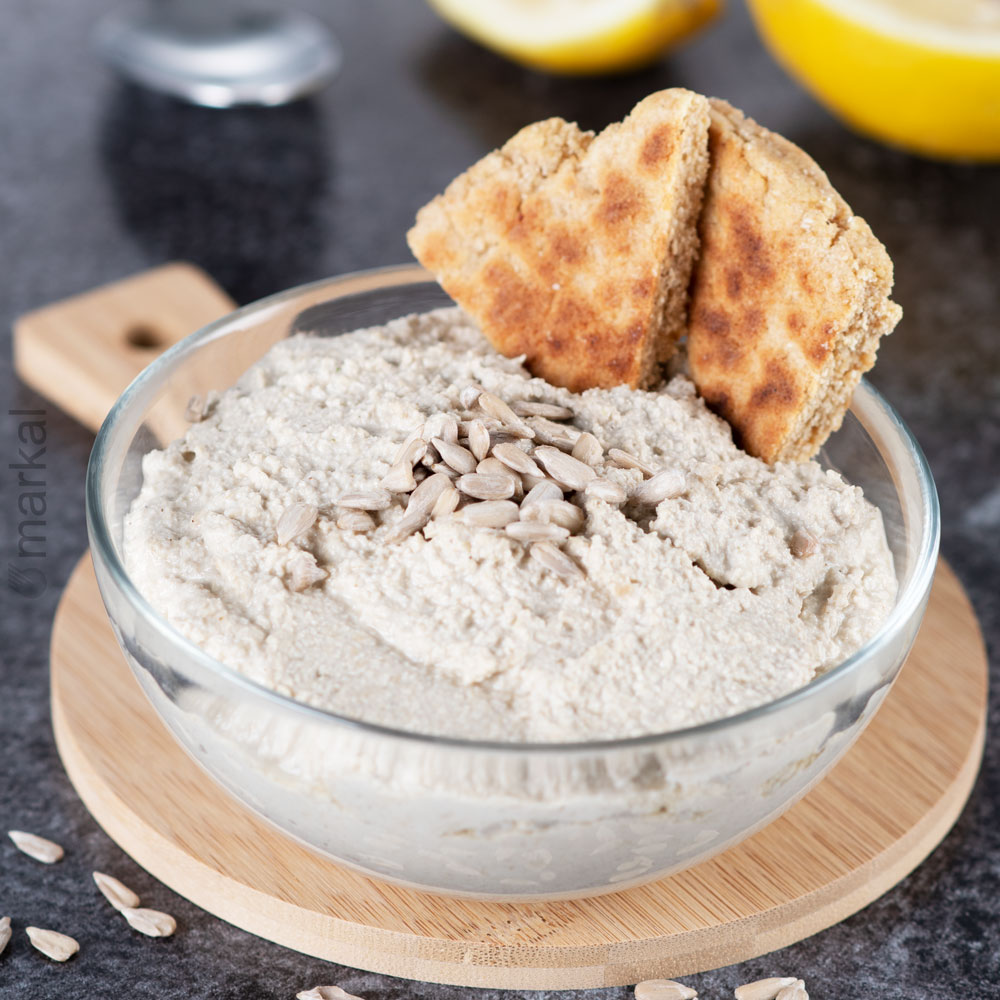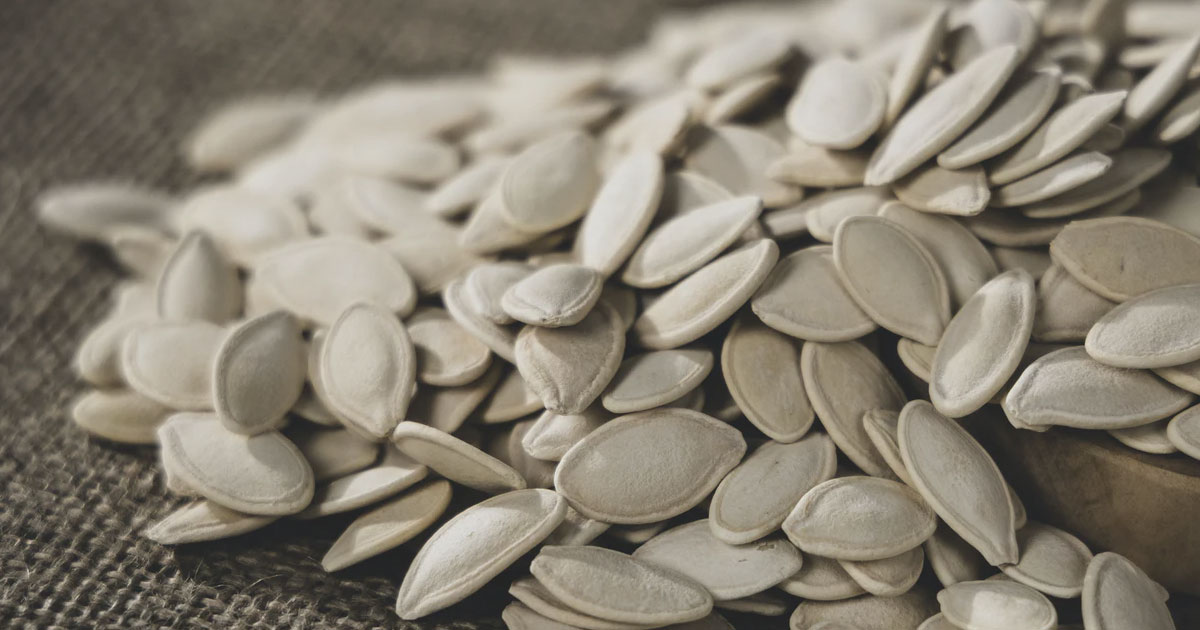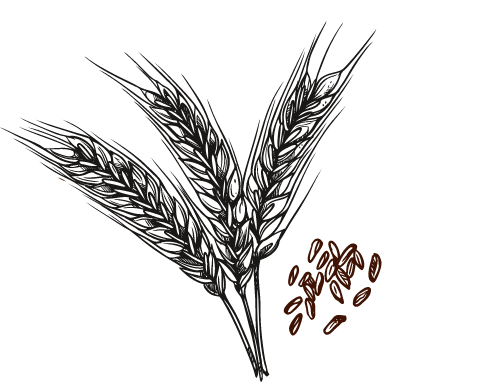They decorate plates and enrich recipes, provide fiber, plant proteins, vitamins and nutrients, and can be eaten or cooked. They are the seeds, these plant embryos used as food. Zoom in on four of them that deserve to be on our plates.
Pumpkin seeds
Squash seeds are medium-sized, oval-shaped and green in color. You have probably come across them while cooking red kuri squash, pumpkin or butternut during the winter: they are found inside the squash, in the fibrous part. They have been used for thousands of years by traditional Amerindian medicine to relieve urinary problems.
Their advantages: they are rich in vegetable proteins, in omega-3 and omega-6, the polyunsaturated fatty acids known as "essential", but also in fiber, magnesium and vitamin E, an antioxidant vitamin.
Their specialty: salads, mueslis, white cheese or bread dough.
What to cook with pumpkin seeds?
- For the morning, a gluten-free bread with 3 flours and pumpkin seeds;
- For lunch, a spinach salad with red cabbage, quinoa with pumpkin seeds and cauliflower with tarragon;
- For snack, an almond, chocolate and pumpkin seed granola;
- For dinner, pumpkin and chestnut gnocchi, basil pesto and pumpkin seeds.
Collect your pumpkin seeds!
If you cook a squash at home, take the opportunity to collect the seeds. Once you have removed the filaments, washed and wiped them dry in the oven at 180°C for about 30 minutes, stirring halfway through cooking, so that you can eat them. Even better? Coat them with olive oil and salt, tamari or turmeric before cooking them to create your own appetizer seeds.
Flaxseeds
Flaxseeds are derived from the plant of the same name and have been consumed since Neolithic times. They are traditionally used to relieve constipation, but their outer shell can also be difficult to digest for sensitive intestines when they are whole.
What makes them special? A high content of mucilage, which gives them a viscous consistency once crushed and soaked in water... consistency that allows them to replace eggs and makes them more digestible! You will find golden or brown flax seeds, with similar properties except for the fiber content, which is higher for brown flax seeds.
Their advantages: particularly rich in omega-3, flax seeds are generally recommended to help restore the dietary balance with omega-6. They also provide vegetable proteins, calcium, zinc and iron.
Their specialty: salads, breakfast mixes, breads or cakes.
What to cook with flax seeds?
- For the morning, a smoothie bowl with red fruits;
- For lunch, a chickpea terrine with sweet spices;
- For a snack, banana bread;
- For dinner, lentil and sweet potato steaks.
What is a flax egg?
If you sometimes come across the term in a recipe, it is simply a mixture of water and flaxseed to replace eggs in cooking: 1 tbsp of flaxseed + 3 tbsp of water = 1 egg!
Sesame seeds
Sesame seeds have also been consumed for thousands of years and are now omnipresent in many cuisines around the world. They bring a nutty flavor that is appreciated and amplified when the seeds are roasted.
There are black sesame seeds, whole and richer in fiber, or hulled sesame seeds, golden and more digestible.
Their advantages: rich in omega-6, sesame seeds should be eaten in moderation compared to flax seeds, but they also provide vitamin E and several minerals: calcium, magnesium, iron, zinc and manganese. They are rich in fiber and vegetable protein.
Their specialty: salads, breads, pastries, sushi... and tahini, the oriental sesame paste!
What to cook with sesame seeds?
- In the morning, organic muesli with rice flakes, cashews, sesame seeds, apricots and apples;
- For lunch, a fresh salad with millet;
- For snack, sesame shortbread;
- For dinner, vegetable sushi with Camargue rice.
Sunflower seeds
Native to South America, sunflower seeds are the nuts of the sunflower plant. Who doesn't know the salted sunflower seeds sold in bags with their shells? To simplify their consumption and limit the consumption of salt, it is better to opt for hulled sunflower seeds, why not salted and roasted home.
Their advantages: they are also rich in omega-6, they provide fiber and vegetable protein, vitamin E and minerals such as magnesium, iron, manganese and zinc. If they are caloric, they are especially energetic.
Their specialty: salads, breads, pastries, fillings or sauces.
What to cook with sunflower seeds?
- For the morning, a lemon cake with poppy and sunflower seeds;
- For lunch, a vegan quiche without pastry with broccoli and sunflower seeds;
- For snack, salted wakame and sunflower seed cookies;
- For dinner, vegan mac and cheese.
How to use the seeds in cooking?
Each seed offers different contributions, and therefore has a different nutritional interest. To take advantage of their benefits, vary them and combine them in every possible way!
1 / Crunch them
While flax and sesame seeds are too small to be crunched by hand, pumpkin and sunflower seeds can easily be served in bowls as an appetizer.
2 / Roast them
Browned in a pan or in the oven, plain or seasoned, the seeds gain in flavor. Be careful, however, as they lose some of their nutritional benefits if they are cooked too long or roasted. If you want to maximize their benefits, eat them raw or dried, or even just pan-roasted, without toasting.
3 / Sprinkle them
Sprinkle a pinch of seeds on your yoghurt and fromage blanc, your salads and gratins, your cakes or breads. The benefits are multiple, since they decorate the dishes, enrich the flavors and bring crunch to the recipe, in addition to their nutritional benefits.
4/ Blend them
Seeds can be blended into recipes for hummus, spreads or pesto, for example, to be served as an appetizer, in sandwiches or in sauces. They can also be used as breadcrumbs or crumbs.
5/ Mix them
A tablespoon of seeds integrated into a bread or cake batter gives it more flavor and texture. Seeds are also the stars of recipes for granola, muesli or energy bars!
6 / Use them as substitutes
Widely used in vegan or "free" cooking, seeds can be used as a substitute for various ingredients. For example? Sunflower seeds mixed with malted yeast flakes become vegetable parmesan, flax seeds combined with water replace eggs...
7 / Use them as decoration
The role of seeds in cooking can be purely aesthetic, to easily decorate a dish, a plate or a cake. Sprinkle them by playing with the colors of flax and sesame seeds, golden or black; or if you have the patience, arrange sunflower or pumpkin seeds, larger, in patterns on breads and pies.
How about mixing seeds?
To vary your intake with deliciously energetic recipes, mix seeds together!
- Sesame + flax + sunflower + squash = seed croquettes
- Squash + flax + sesame = energy bars with seeds and dates
- Sunflower + flax = an energy bread with seeds and turmeric
- Sunflower + sesame = date, almond, cranberry and goji berry truffles
- Sesame + Flax = Golden bread
- Sesame + Sunflower = a dried fruit granola
- Flax + sunflower = a salted granola with herbs and tamari
- Squash + sunflower = butternut soup with coral lentils and salted granola










